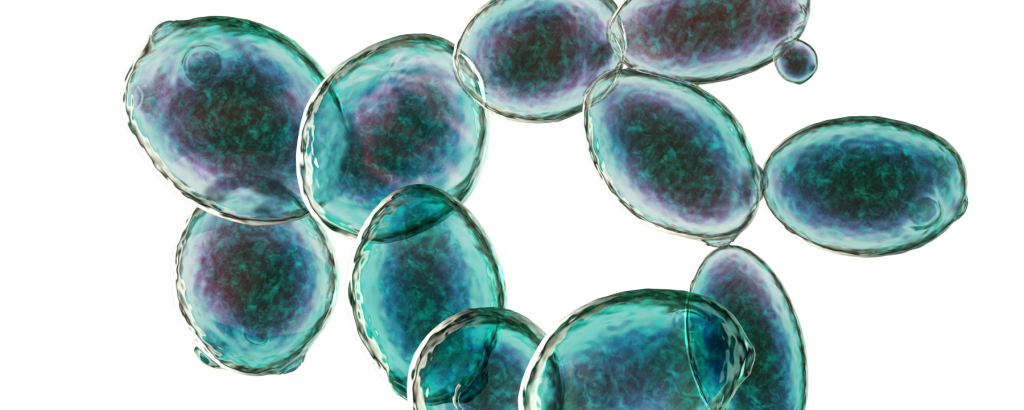Researchers have long puzzled over why many eukaryotic protein-coding genes are interspersed with segments of noncoding DNA that have no obvious biological function. These so-called introns are typically spliced out from their original sequence between transcription and translation and rapidly destroyed prior to protein production. Two studies published today (January 16) in Nature now reveal an unexpected role for introns, at least in yeast: many of them linger in the cells long after splicing, and play an important role in regulating cell growth under stressful conditions.
“I find it quite surprising and exciting, that something like an intron—which is normally regarded as a waste product—can have such a dramatic regulatory role during certain physiological conditions like starvation,” remarks Jürg Bähler, a geneticist at University College London, who was not involved in either study.
Since the discovery of introns in 1977, researchers have proposed several theories why they exist: they could be important in regulating gene expression by delaying the amount of time it takes to translate DNA into protein, for instance. Introns would also allow for alternative splicing, a process that allows ribosomes to assemble multiple different proteins from a single gene. But nevertheless, people always thought of introns as junk DNA, says geneticist Sherif Abou Elela from Sherbrooke University in Canada.
The discovery of introns’ function in yeast was reached independently by Elela’s team and another research group via different approaches. In one study, researchers at the Massachusetts-based Whitehead Institute for Biomedical Research led by RNA biologist David Bartel made the discovery by chance: In an unrelated study, Bartel’s former PhD student Jeffrey Morgan, now a postdoc in Jared Rutter’s lab at the University of Utah, detected a number of intron segments through RNA sequencing in yeast cells that were suspended in a phase of reduced cell growth. This suggested the introns were accumulating in the cells, rather than being degraded.
Upon further investigation, the team found 34 introns—around 11 percent of yeast introns—that appeared to be unusually stable and lingered around the spliceosome complex, the cellular machinery responsible for excising introns from pre-messenger RNA. “It looks like they remain associated with some of these spliceosome components, and that prevents them from getting degraded,” Bartel explains, although he’s not certain exactly how.
To assess the potential biological role of these unusually stable introns, the team used CRISPR to delete a handful of them from the yeast genome, and compared the growth of the altered cells to normal cells by culturing them together. The altered cells thrived in comparison to wild-type cells, when they both had access to abundant nutritional resources, but not under very limited resources. By contrast, the wild-type cells flourished when food was scarce, but not when there was more to go around. Evidently, “these stable introns could either help or hurt” the cell populations, Bartel says, slowing growth in prosperous conditions while helping the cells persist longer during starvation.
The other research team, led by Elela, initially set out to understand why yeast have introns at all. To find out, his group systematically constructed a library of 295 yeast strains in which each strain had a different intron deleted—a project the team started in 2002, Elela says.
Deleting introns stunted cell growth in nutrient-poor environments, similarly to Bartel’s results, but had little effect on cells when there were plentiful resources. Elela’s group found that many introns across the yeast genome—around 90 percent—had this effect when deleted.
It’s unclear how the introns promote cell survival under starvation conditions. Both teams have proposed a mechanism whereby the sequences clutter up the spliceosome apparatus and thereby prevent it from splicing newly transcribed introns. In nutrient-scarce environments, this would be beneficial for the cells’ survival because it would prevent them from wasting energy on trying to grow in environments in which there aren’t enough resources available. In support of this idea, additional experiments by Elela’s group suggest that in starved cells, introns suppress the expression of ribosomal protein genes necessary for protein production. To him this suggests that the introns are allowing fewer of these genes to become spliced and translated, ultimately slowing cell metabolism, reducing energy consumption, and thereby helping the cells to survive for longer.
On the flip side, slowing down cell metabolism would be detrimental under prosperous conditions, in which cells have enough resources to grow. Based on other experiments, the researchers propose a model whereby the TORC1 pathway—a key signaling cascade that controls yeast growth in response to nutrients—drives the accumulation of introns in nutrient-poor environments. Ultimately, this would help the cells cope better under stress, by ensuring the cell won’t use up precious resources trying to produce proteins and grow when nutrients are limited. “Good day junk is bad day treasure,” Elela says.
For Bähler, the idea makes sense. He notes that the TORC1 pathway is already known to regulate the production of ribosomal proteins, but via different mechanisms, he says. So the intron accumulation “seems to be an additional level of control that is at the splicing level,” he remarks.
Bartel is fascinated by both groups’ findings, although he thinks that the unusually stable introns he observed in his study may play a different role than the introns Elela’s group observed. At the same time, he wonders how conserved such functions of introns are. “There are many places where introns could have functions,” he says, “and we would be surprised if yeast could be the only species that have a use for these excised introns.”







